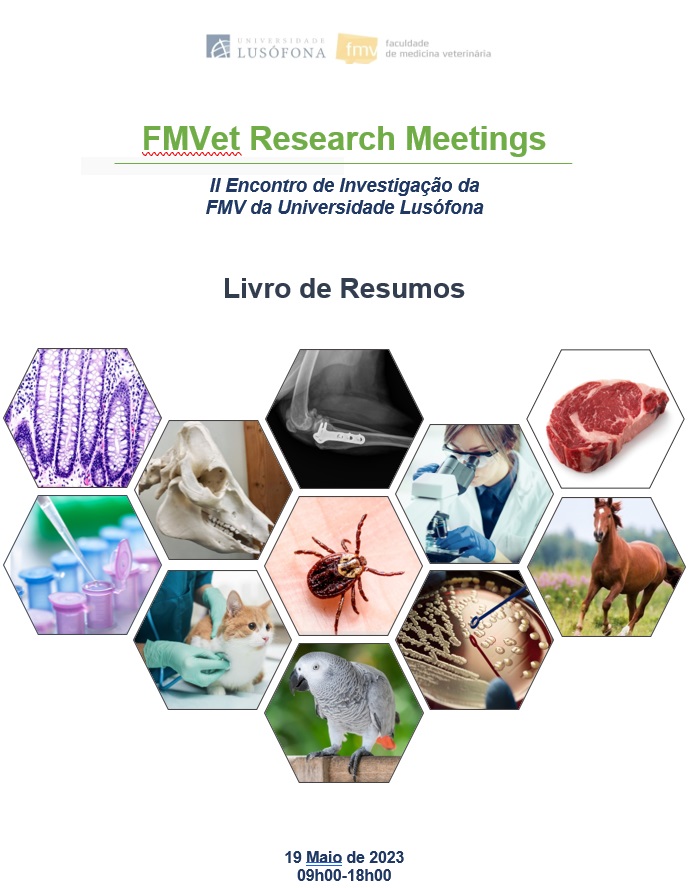Salmonella spp. serovars isolated from healthy Leopard geckos (Eublepharis macularius) in Lisbon, Portugal
Resumo
Objectives: This study aims to evaluate the frequency of Salmonella spp. in cloacal and oral cavity samples from healthy Leopard geckos, serovars identification, and phenotypic characterization.
Material and Methods: For 3 months cloacal and oral cavity samples were collected from healthy Leopard geckos. Presumptive Salmonella spp. colonies on IRIS Salmonella® agar were isolated and confirmed by PCR amplification of the invA gene. Serotyping was performed according to White-Kauffmann-Le Minor scheme. In all Salmonella spp. isolates susceptibility to 16 antimicrobials was studied by the disk diffusion method and interpreted according to the EUCAST and CLSI criteria. Extended-spectrum beta-lactamase (ESBL) producing Salmonella spp. screening was performed in all isolates by the double-disk synergy test and the results were interpreted according to the EUCAST guidelines.
Results: Twenty of the 33 (60.6%) animals sampled tested positive for Salmonella spp. Regarding the cloacal and the oral cavity samples studied 85.0% (17/20) and 30% (6/20), respectively, were positive for Salmonella spp. In cloacal samples seven serovars were recovered: Salmonella enterica salamae ser. 16:m,t:- (n=6), Salmonella enterica enterica ser. Fluntern (n=5), Salmonella enterica enterica ser. Typhimurium (n=2), Salmonella enterica enterica ser. Senftenberg/Dessau (n=1), Salmonella enterica salamae ser. 30:l,z28:z6 (n=2), Salmonella enterica enterica ser. Tennessee (n=1). Regarding oral cavity the most frequent were Salmonella enterica salamae ser. 16:m,t:- (n=3), followed by Salmonella enterica enterica ser. Fluntern (n=1), Salmonella enterica enterica ser. Adelaide (n=1) Salmonella enterica enterica ser. Tennessee (n=1). In this study MDR bacteria, such as ESBL/AmpC, and carbapenemase-producing Salmonella spp. were not detected. Most of the isolates were susceptible to all the antimicrobials studied.
Conclusion: In this study serovars with high zoonotic potential were identified, such Tennessee and Typhimurium. More research on the role of these exotic pets in the spread of this pathogens is needed, for a One Health approach to fight the dissemination of zoonotic Salmonella.
Keywords: Leopard geckos; Pets; Salmonella spp.; Antimicrobials; One-health.
Funding: This work is part of the strategic project Detection of pathogens in the oral and fecal flora of healthy leopard geckos (Eublepharis macularius)”, funded by FMV-ULHT in 2022-2023.


